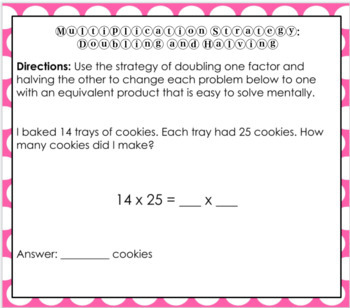Current Rain Predictions: Accurate Timing Of On And Off Showers

Table of Contents
Understanding the Limitations of Rain Prediction Models
While technology has advanced significantly, predicting the precise timing of rain remains challenging. Several factors influence the accuracy of weather forecasting, including:
-
Limitations of weather radar resolution: Weather radar provides a snapshot of precipitation, but its resolution isn't perfect. Smaller, localized showers might be missed or their boundaries might be imprecise, leading to inaccuracies in predicted timing. Improvements in radar technology are constantly underway, leading to better resolution and more accurate data.
-
The chaotic nature of atmospheric systems: The atmosphere is a complex system governed by chaotic equations. Small changes in initial conditions can lead to significant differences in the weather forecast, especially further into the future. This inherent unpredictability makes pinpointing the exact start and end times of showers difficult.
-
Difficulties in predicting localized microclimates: General weather forecasts cover large areas. However, microclimates – small areas with unique weather patterns – can significantly alter rainfall timing. A mountain range, for example, might trigger intense localized showers while nearby areas remain dry. This is a challenge for broader forecasting models.
-
Improvements in weather models: Despite limitations, advancements in weather models are constantly being made. Higher-resolution models, coupled with more accurate data inputs from satellites, weather stations, and other sources, are leading to improvements in weather forecasting accuracy, particularly for short-term predictions. The use of sophisticated computer algorithms and machine learning techniques is also enhancing predictive capabilities.
Interpreting Rainfall Probabilities and Intensity Forecasts
Understanding how to interpret weather forecasts is key to effective planning. Rainfall forecasts include probabilities and intensity estimations.
-
Decoding probability forecasts: A 70% chance of rain doesn't mean it will rain for 70% of the day. Instead, it indicates that there's a 70% probability that at least some rain will occur within the forecast period at your specific location.
-
Understanding intensity scales: Intensity scales (light, moderate, heavy) describe the rate of rainfall. A light shower might be a brief drizzle, while a heavy shower could lead to significant accumulation in a short time. Understanding this helps in judging the severity and duration of the expected rain.
-
Using precipitation accumulation maps: These maps illustrate the expected total rainfall over a given period. This information helps assess the overall impact of the rain, such as potential flooding.
-
Relating intensity and probability to the duration of showers: Combining probability and intensity allows for a better understanding of shower duration. A high probability of heavy rain suggests longer and more intense precipitation events. Conversely, a low probability of light rain implies shorter, less impactful showers.
Utilizing Multiple Weather Resources for Improved Accuracy
Relying on a single weather source can be misleading. Consulting multiple sources offers a more comprehensive picture.
-
Comparing forecasts from different weather models: Different models use varying datasets and algorithms, leading to slight variations in their predictions. Comparing forecasts from reputable sources, such as the European and American models, can reveal a more nuanced understanding of the likely weather scenario.
-
Using a combination of radar imagery and forecast maps: Radar imagery shows real-time precipitation, while forecast maps provide predicted future rainfall. Combining these resources offers a dynamic view of the evolving weather situation, enhancing the accuracy of timing predictions.
-
Checking hyperlocal forecasts from community weather sources: Local weather enthusiasts and groups sometimes provide hyperlocal forecasts that are more specific than broader national or regional predictions. These can be invaluable for pinpointing the precise timing of showers in a smaller area.
-
The benefits of diversifying your weather information sources: Using multiple, reputable sources helps to mitigate the limitations of any single prediction method. Comparing and contrasting information strengthens your ability to make informed decisions based on the most likely scenario.
Advanced Techniques for Pinpointing Shower Timing
For a more precise understanding of shower timing, consider these advanced techniques:
-
Analyzing high-resolution radar animations: High-resolution radar loops show the movement of precipitation in real-time. By studying these animations, you can get a better sense of how quickly a shower is approaching and how long it might last.
-
Understanding the movement and speed of weather fronts: Learning about weather systems and front movement provides a framework for predicting shower timing. Understanding the speed and trajectory of a front helps estimate the arrival time of associated showers.
-
Using weather apps with advanced features: Many weather apps offer features such as detailed radar imagery, advanced forecasting models, and interactive maps, significantly enhancing your ability to pinpoint the timing of showers.
-
Interpreting satellite imagery: Satellite imagery provides a broader view of weather systems. Studying this imagery alongside other forecasts can offer a more holistic understanding of the evolving weather pattern and better prediction of rain timing.
Conclusion
Accurate current rain predictions are essential for daily life. Understanding the limitations of weather models, interpreting probabilities and intensities correctly, and utilizing multiple weather resources are key to improving your ability to anticipate showers. By employing these strategies and exploring advanced techniques, you can significantly enhance your weather preparedness. Stay informed about current rain predictions to avoid unexpected showers! Utilize the strategies discussed above to master the timing of on and off showers and improve your weather preparedness. Continue learning about improving your understanding of current rain predictions for better planning.

Featured Posts
-
 Trans Australia Run A World Record In Jeopardy
May 21, 2025
Trans Australia Run A World Record In Jeopardy
May 21, 2025 -
 Evaluating Giorgos Giakoumakis Suitability For An Mls Transfer
May 21, 2025
Evaluating Giorgos Giakoumakis Suitability For An Mls Transfer
May 21, 2025 -
 Liverpool Awaits Klopp Pre Season Finale Return Confirmed
May 21, 2025
Liverpool Awaits Klopp Pre Season Finale Return Confirmed
May 21, 2025 -
 Dexter New Blood Resurrection Trailer Release Date Speculation
May 21, 2025
Dexter New Blood Resurrection Trailer Release Date Speculation
May 21, 2025 -
 Prediksi Juara Liga Inggris 2024 2025 Akankah Liverpool Menang
May 21, 2025
Prediksi Juara Liga Inggris 2024 2025 Akankah Liverpool Menang
May 21, 2025
Latest Posts
-
 The Future Of Saskatchewan Analyzing Western Separation With A Political Panel
May 22, 2025
The Future Of Saskatchewan Analyzing Western Separation With A Political Panel
May 22, 2025 -
 Saskatchewan And Western Separation A Political Panel Discussion
May 22, 2025
Saskatchewan And Western Separation A Political Panel Discussion
May 22, 2025 -
 Bp Chief Executives Strategy Doubling Valuation No Us Stock Market Switch
May 22, 2025
Bp Chief Executives Strategy Doubling Valuation No Us Stock Market Switch
May 22, 2025 -
 Controversial Remarks At Saskatchewan Political Panel Following Federal Leaders Visit
May 22, 2025
Controversial Remarks At Saskatchewan Political Panel Following Federal Leaders Visit
May 22, 2025 -
 Saskatchewans Path A Political Panel Discussion On Western Separation
May 22, 2025
Saskatchewans Path A Political Panel Discussion On Western Separation
May 22, 2025
